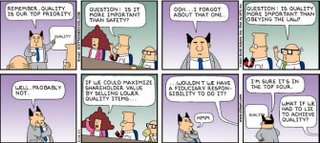
Are you one of those people who have to check your order before you leave the fast food drive thru parking lot? I sometimes do and I sometimes don’t depending if I have gotten a wrong order from the restaurant before. Time also is a factor because well just because.
 When I do check and the order is it is wrong I then have to pull over to the reserved parking for the Drive Thru and walk inside and wait in line or I hold it up saying “wrong order.” I have even got so upset when I got home and pulled the food out of the bag I drove back through the drive thru and waited for an exchange of order.
When I do check and the order is it is wrong I then have to pull over to the reserved parking for the Drive Thru and walk inside and wait in line or I hold it up saying “wrong order.” I have even got so upset when I got home and pulled the food out of the bag I drove back through the drive thru and waited for an exchange of order.I estimate my order being right about 75% (3 out of 4) of the time. I can also say it happens at all of the fast food restaurants I visit (especially the Big 3, - arches, crown & young girl).
It happened again two nights ago to my wife. The order was 4 fish sandwiches, 2 large fries and a diet cola. Total was around $12.00 dollars. She wanted to get home and change because she had just left an exercise class. As she started to unload the bag some expletives came shouting of the chicken. “I don’t believe this, they gave me the wrong order.” Didn’t you check before you left I asked?” No, I was in a hurry.” Being rather hungry I hoped the wrong order was salvageable. Nope, there was one cheeseburger, two small fires, two small chicken nuggets with sweet and sour sauce and one small cola (not diet).
Since it would take about 30 minutes for a round trip I decided to have a bowl of cereal. My wife ate the nuggets and the dogs had some fries. After my second bite of Rice Chex I called the restaurant and asked for a manager (a long wait).
I explained the situation and of course he offered to replace the wrong order. Then he said, “Sir, most people check their order before leaving the premises.” Being a retired Quality Director and Adjunct Professor of Process and Quality Systems and a frequent checker of my meal before leaving I could not hold back.
Sir, let me explain it this way, you are telling me to order a new car, pay for the car and find out later it was not the car I ordered because it has the wrong wheels and interior color. The salesman offers to take some money off if I take the wrong order or the dealership will provide me with a loaner until the car I ordered comes in a few weeks.
He replied that my example was - you hear it all the time the great comeback of everyone. “Sir, You are comparing apples and oranges, clearly you would be more upset if the car was not correct.”
No, I replied, “You are telling me it is my responsibility to check my order at the end of the conveyor belt. You are telling me that I did not lose faith in your business and my customer satisfaction is not in jeopardy. You are further telling me that that you don’t care if you lost a customer or an unknowable amount of revenue.
The manager was in no mood for a lecture on customer satisfaction he apologized again and hung up the phone. Unfortunately what happens is sometimes customers complain, some customers tell others, some customers use the company in their next Quality Lecture and some customers write about it in their blog and some customers just go away.
That is the unknowable amount of dollars that a company cannot predict. Why, because they have no idea how many customers have left and will not return. Most just get angry and drive to the next dealership or restaurant and say.
I guess the others don’t want my money!
Another qualityg example of the “Demise of American Management.”





